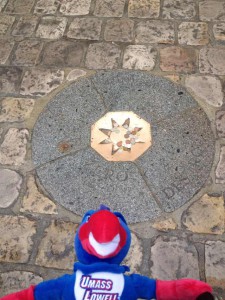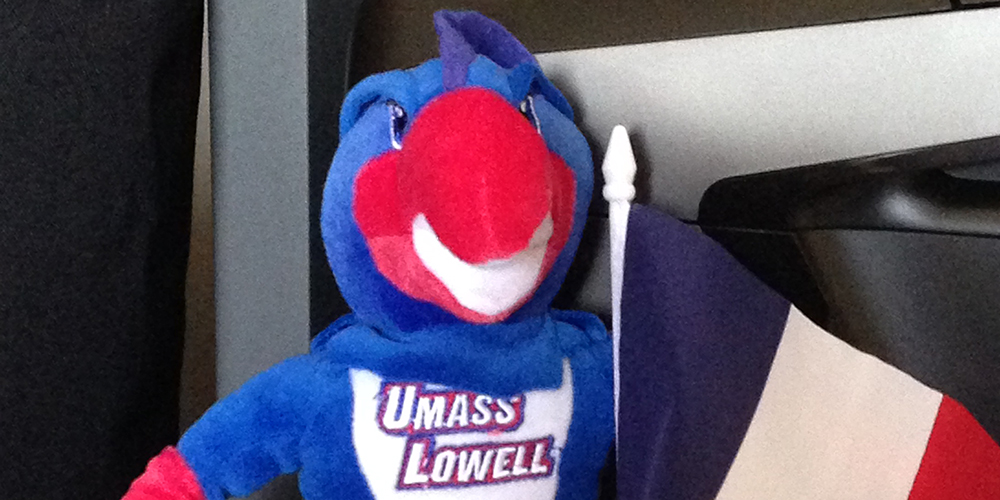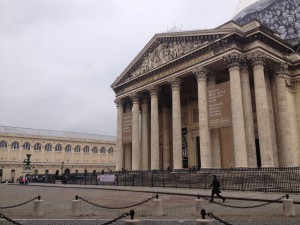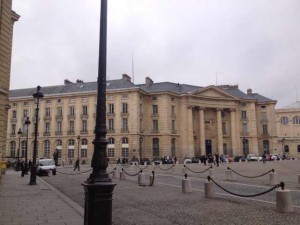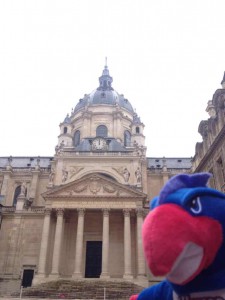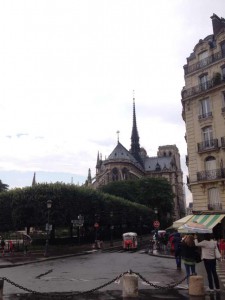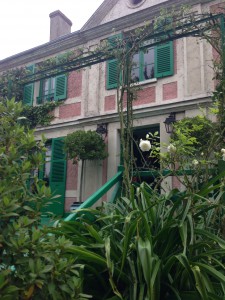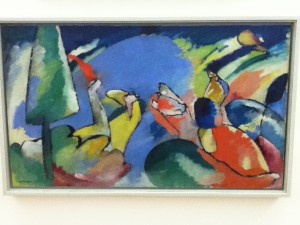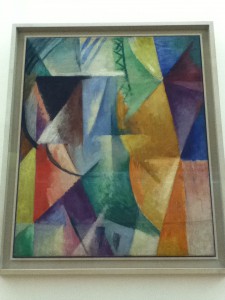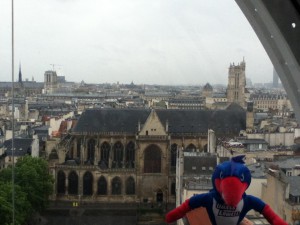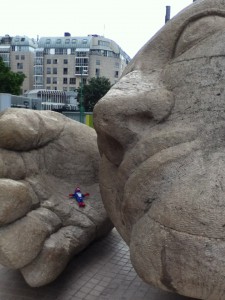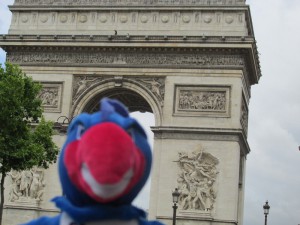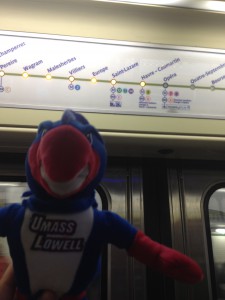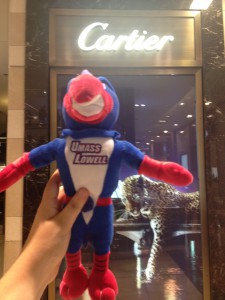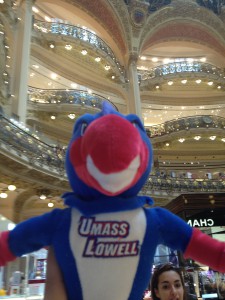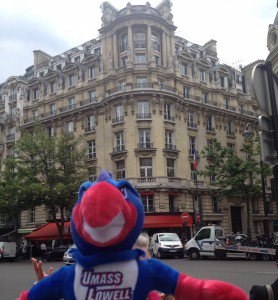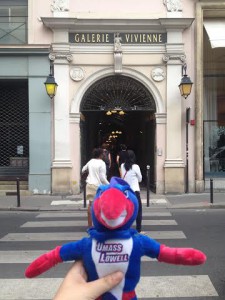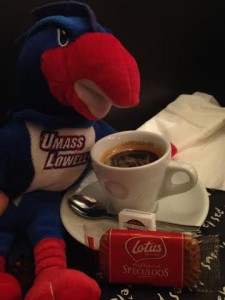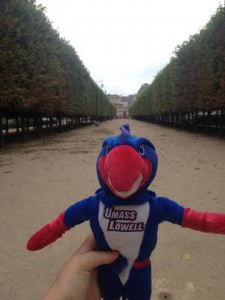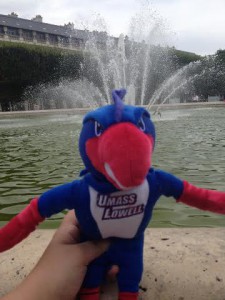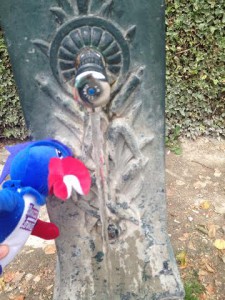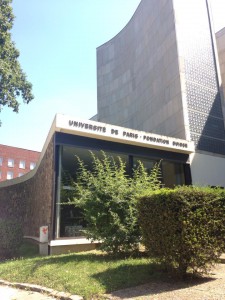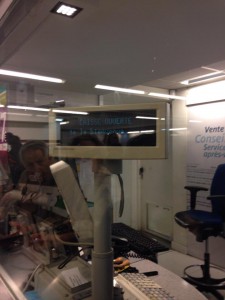Happy Fourth of July to America, but to us in France it’s just another day here (just a bit more pep in our step).

Flag outside our house!
Today we visited two very large and very important department stores. The first one was the Grand Magasin Au Printemps. They bought one of the buildings to create the store, when they wanted to expand they bought the building across the street. Soon, they knocked both of them down and rebuilt them to look alike, and not only did they rebuild the buildings but they added a bridge to connect them. The Galleries Layfatte is another large department store we visited.
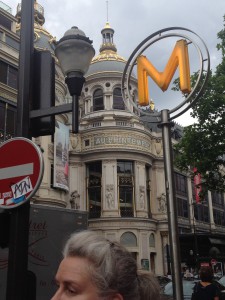
Le Grand Magasin Au Printemps

The bridge that connects both stores instead of having to leave the building to cross the street.
The buildings decorative details inside are created by cast iron, so nowadays it’s harder to copy the beautiful details. They made a cast iron skeleton for the buildings and if you were to try to make the same gorgeous elements in stone you’d have to carve them.
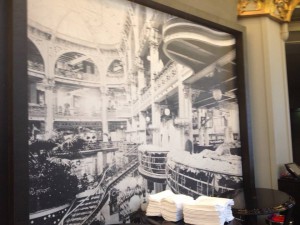
It’s a picture of the iron detail work we saw in the department stores.
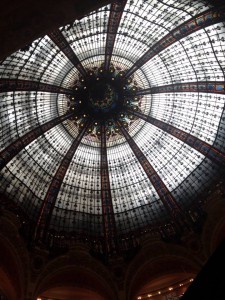
This was the dome ceiling that was able to be created for the department stores.
Each floor has its own category of apparel; one floor is just for shoes which I can totally agree with considering my obsession with them. Ladies in beautiful dresses would assist you, not unlike today where there are still attendants. However, nowadays you don’t have to wear a beautiful dress you can wear a stunning black outfit.
Women who work at the Au Printemps are given discounts and a stipend for buying clothes, getting their hair down, and buying makeup. The whole image of looking good helps with selling, it’s selling the image that people want.
In small shops you’d have to greet the owner and ask the price of whatever you wanted or instead of money it’d be the bartering system. When the department stores were created and started popping up, they gave everything a price tag so you would know what you needed to pay for the item, you would know what you would need to save and accents wouldn’t be as much as a problem so communication for buying would be easier.
In these ways, department stores changed how the culture of France. Society was changed, people were becoming poor that used to be working class because they owned their own little shops. This could cause serious strife for owners like we saw today in the movie, . Aside from department stores shaping and molding certain societal aspects, Haussman carved a part of the French culture of society. 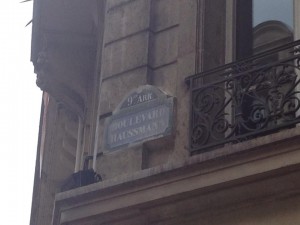
Napoleon the Third was concerned with cleaning up Paris. As a result, he wanted Haussman to help him clean the city up. As requested, Haussman did just that. He destroyed buildings that were part of Medieval Paris to make avenues. In current day Paris, we have what Haussman created. There are large streets and centers of neighborhoods where roads and avenues split off like arteries from a heart. It helps with circulation.

A small center of the streets where the arteries connect to.
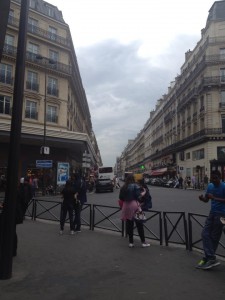
An artery that breaks off.
For the first time water and gas was offered in the houses he built. For the bourgeois class, this earned them bragging rights. In these mini heart centers on Sunday the Bourgeois want to be seen. They wanted to show people who they were and what they could do. A way to do this was dress, so on Sundays they would come walking out in their fancy dresses to almost flaunt what they got.
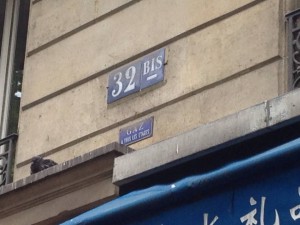
This building was equipped for gas.
I thought it was interesting to see how not only do people create societal impact, but buildings do as well. I mean of course those buildings were created by people, but it seems to me it was more of what the department stores meant to people. It meant losing jobs and putting families who always worked in small shops out of business. On the other hand, it helped with expansion and progress. Then Haussman created social impact with his houses, because Bourgeois were able to flaunt what they had and solidify social structure. I like looking at how culture and societies are affected in certain ways, but truly seeing the places that affected them is even cooler.
